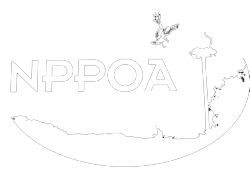Menhaden Fishing
Kathryn Stutzmann’s home on Nassau Point Road was formerly a shack used by a group of men who called themselves the Old Skunks. The shack stood at the northern end of the causeway beach close to where the bathrooms and children’s play area is now. (See the article on her home on this website).
The Skunks were just one of several groups who seine fished, mostly for menhaden, off the shores of Little Peconic Bay. Groups like them had been engaged in this pursuit since the late 1700’s. Menhaden were, despite their terrible smell, a fish commonly eaten here and in Connecticut where they were shipped for pickling and preservation. However, because menhaden had many bones, they were not long fancied at local tables.
Instead, farmers discovered from the native Indians that the fish could be used as fertilizer. The menhaden, also known as sea shad, moss and skip hog and bunker, were simply spread on the land, perhaps lightly covered. The effect on the land was marvelous and its nutrients enriched the land. The smell, however, was terrible, described by residents as “powerfully poignant and all pervading.”
As the popular use of the fish spread, companies were formed by the farmers and also by men who sold their catch to farmers. It is estimated that there may have been over thirty such companies. Each took on names that rivaled the Skunks; the Nullifiers, Coots, Dumdugeons, Hottentots, and the Weazles being just a few.
The shacks were similar in structure, featuring a central room with a large fireplace and at the other end, bunks for those who chose to stay overnight. That room became the central core for the current Stutzmann home on Nassau Point Road.
In the 1800’s, men bought shares at a cost of $50 to $100. Sometimes, the shares were divided into smaller units and the amount of holding determined how often the share owner fished and what his take was from the catch.
The fishing season began in early May and lasted through June. After the harvest in early Fall, the season resumed for a few more weeks.
Seine fishing is a process where a boat is rowed out into the bay tugging behind large nets. The fish are captured in the nets and men on shore draw them onto land with a rope tied to a capstan and pulled by a horse.
Reports from 1851 note catches in May totaling up to 200,000 bunker in one day. 12,000 fish could cover 83 acres. As time went by, ways to dry the fish were developed which eliminated some of the terrible smell. Still later, the fish were able to be ground and shipped in bags. Over time the bunker dried up and the practice disappeared as new means of fertilizing were created.
Old Menhaden remains as a small street on Nassau Point and a reminder of a long gone industry.
by John Barthel, NPPOA Historian submitted for web publication 09-12
(The sources of much of much of the information in this article are old editions of the Suffolk Times and the Peconic Bay Shopper)

